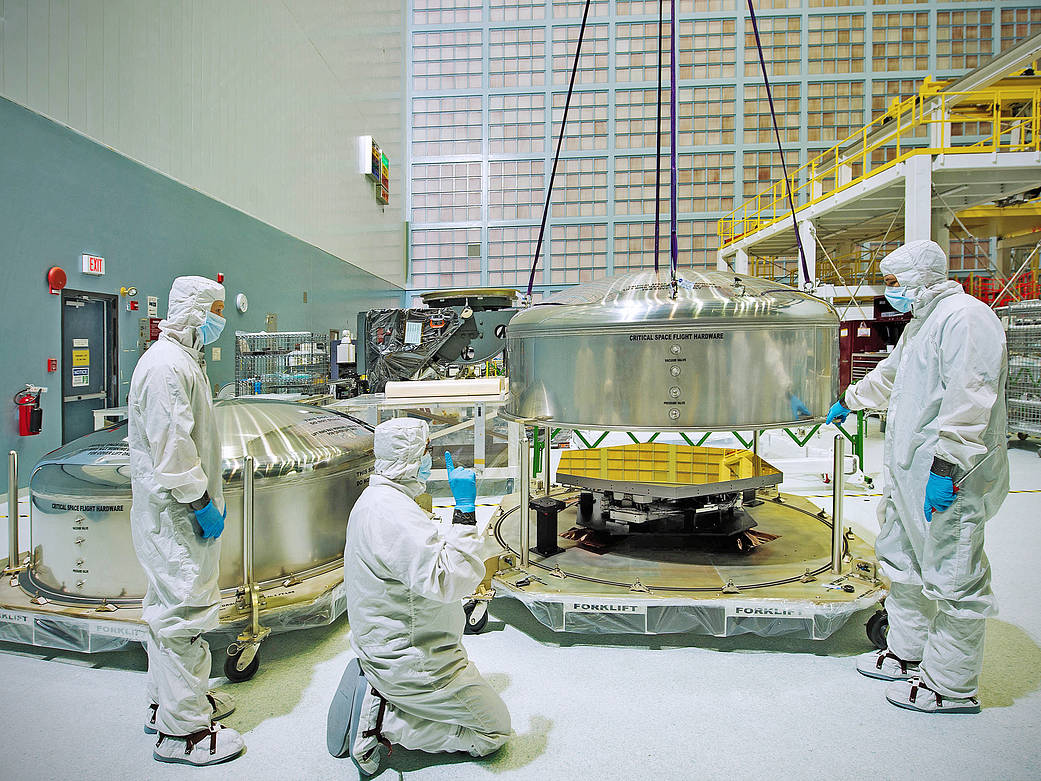
The first two mirrors that will fly aboard NASA’s James Webb Space Telescope arrived at NASA’s Goddard Space Flight Center in Greenbelt, Md. on Sept. 17, 2012. In this photo, one of the two mirrors was being “uncanned” as the shipping canister it was shipped in was opened in NASA’s giant clean room.
There are a total of 18 mirror segments that make up the Webb’s huge primary mirror. The mirrors were shipped from Ball Aerospace & Technologies Corp. of Boulder, Colo. who manufactured and packed them.
The Webb telescope’s mirrors will allow the James Webb Space Telescope see farther away and further back in time to detect the light from the very first and most distant stars and galaxies.
The Webb telescope has 21 mirrors, with 18 primary mirror segments working together as one large 21.3-foot (6.5-meter) primary mirror. The mirror segments are made of beryllium, which was selected for its stiffness, light weight and stability at cryogenic temperatures. Bare beryllium is not very reflective of near-infrared light but gold is, so each mirror segment is coated with about 0.12 ounces of gold.
The Webb telescope is the world’s next-generation space observatory and successor to the Hubble Space Telescope. The most powerful space telescope ever built, the Webb telescope will provide images of the first galaxies ever formed, and explore planets around distant stars. It is a joint project of NASA, the European Space Agency and the Canadian Space Agency.Image Credit: NASA/Goddard Space Flight Center/Chris Gunn





























